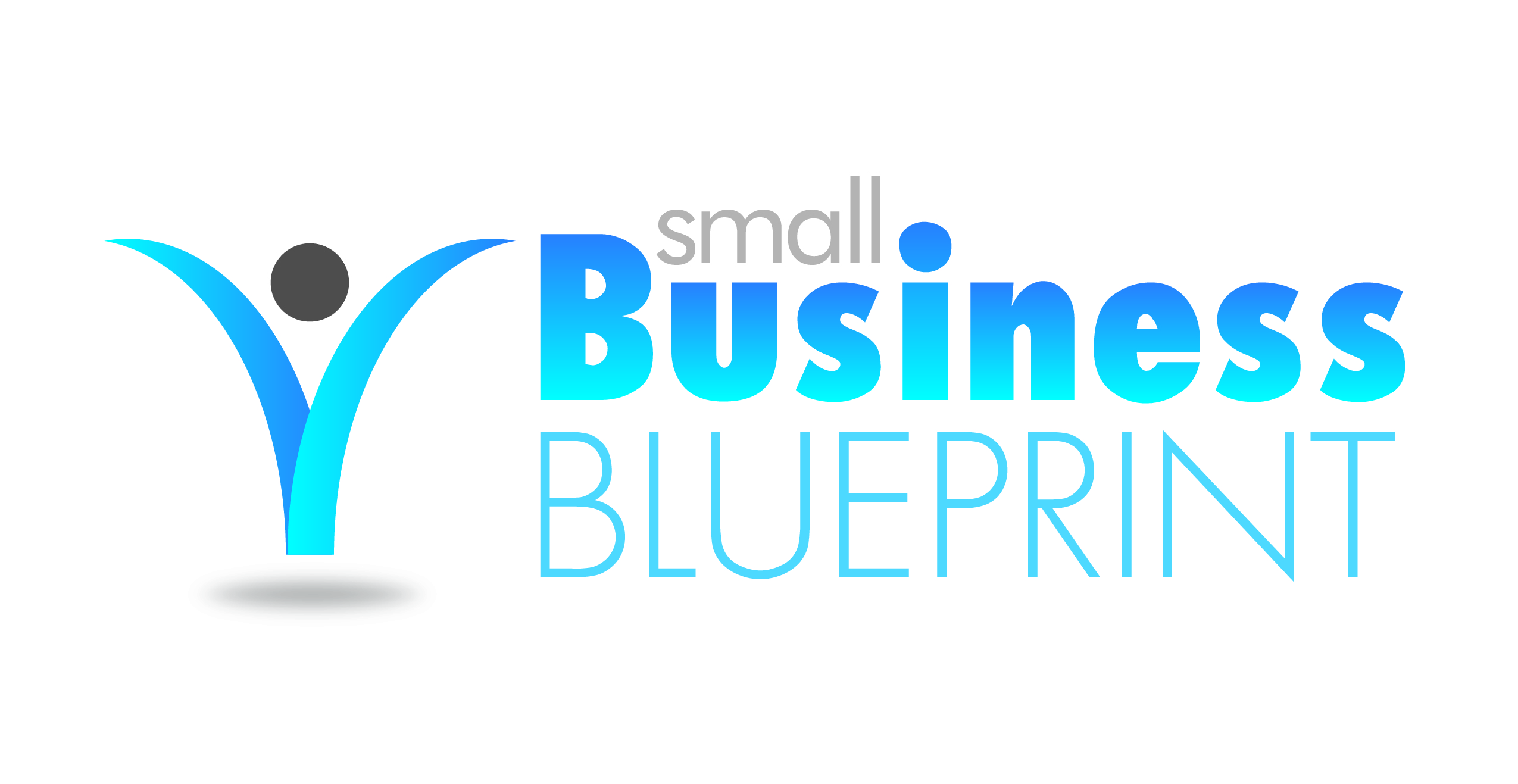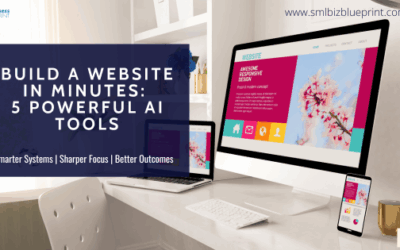Automation isn’t just for tech-savvy businesses—it’s a game-changer for non-tech business owners ready to reclaim their time and grow with ease. By automating simple, repetitive tasks like email follow-ups, appointment scheduling, and invoicing, you can reduce stress, improve consistency, and scale smarter.
This guide shows you exactly how to get started using no-code tools and practical steps—no coding required.
You didn’t start your business to spend your days chasing invoices, replying to the same emails over and over, or manually posting to social media.
Yet, here you are—working late, feeling buried in repetitive tasks, and wondering how you’re supposed to grow when every minute is spoken for.
The real kicker? You know automation could help… but every tool looks complicated, every tutorial sounds like it’s meant for a software engineer, and you’re not even sure where to begin.
Here’s what’s at stake: staying stuck in manual mode drains your energy, caps your income, and steals time from your real priorities: strategy, customers, growth, and your life outside work.
If you don’t fix this, your business plate will just keep getting fuller while your bandwidth gets thinner.
You’re running payroll, reviewing an invoice, and suddenly remember—you never replied to the lead who messaged last Thursday. That ping of guilt hits. Then the day rolls on, and that lead fades into your inbox abyss. It’s not laziness—it’s overload. You’re doing everything manually, and it’s silently bleeding your business.
This post is your step-by-step escape from that cycle.
But here’s the shift: automation isn’t just for big companies or tech wizards anymore.
Today, non-tech business owners like you are using simple, no-code tools to reclaim hours each week, impress customers with faster responses, and unlock real growth—without hiring staff or learning to code.
In this guide, we’ll show you 10 practical automation wins you can implement this week—even if you’ve never touched a workflow tool in your life.
You’ll learn what to automate, which beginner-friendly tools to use, and how to build smarter systems that run silently in the background while you focus on what matters most.
Let’s make your business work for you—automatically.

#1 What Is Business Automation (And Why It’s No Longer Optional for Small Businesses)
You’re doing too much, too manually—and it’s costing you.
Every time you send a follow-up email manually, manually invoice a customer, or copy and paste appointment reminders, you’re spending energy on tasks that should already be running in the background.
Multiply that across your week, and you’ll find hours lost to repetitive admin that stalls your momentum and wears down your focus.
Automation is the shift from survival mode to strategic growth.
Business automation utilises software to automate recurring tasks, including emails, scheduling, payments, and customer communication, eliminating the need for constant manual input.
It’s not about removing your personality from the business. It’s about removing the friction.
When automation handles the busywork, you show up where it counts: building relationships, closing deals, refining offers, and growing profitably.
It’s no longer a nice-to-have—it’s the only way to scale without burnout.
In today’s fast-paced landscape, small businesses that don’t automate are falling behind. According to a 2024 report by Zapier, 76% of small businesses spend up to 10 hours per week on tasks that could be automated.
That’s more than 40 hours a month—an entire workweek gone, not growing your business, just maintaining it.
You don’t need to be tech-savvy to reclaim these hours.
Modern automation tools are built with simplicity in mind. Drag-and-drop logic. Visual workflows. Plain-English rules.
Even if you’ve never used software beyond email or spreadsheets, these tools are designed to meet you where you are and scale with you as you grow.
If you continue to rely on manual systems, you’re limiting your income and hindering your growth.
But if you start now, with one simple workflow, you’ll unlock time, energy, and opportunities that were previously trapped in admin. That’s how businesses grow today: not by doing more, but by automating smarter.
Pro Tip:
Start by identifying your most repetitive weekly task—the one you dread but can’t avoid. That’s your first automation target. Solve that, and you’ll immediately feel the shift.
Ready to level up your business?
Sign up for our newsletter and get expert tips delivered weekly.
#2 Can Non-Tech Business Owners Really Use Automation Without Coding?
Yes—you absolutely can automate without writing a single line of code.
One of the biggest myths that keeps business owners stuck is the misconception that automation is only for tech experts. The moment you hear “workflow” or “integration,” your brain says that’s not for me.
And so you keep doing it all yourself—every reminder, every update, every reply—manually.
But here’s the truth: No-code automation tools are built for people just like you.
Today’s platforms are designed for business owners, not developers. With simple drag-and-drop interfaces, plain-language triggers like “when someone subscribes” or “after a purchase,” and prebuilt templates, you can automate core tasks in minutes.
No technical background. No developer. No jargon.
You’re already more tech-capable than you think.
If you’ve used Gmail filters, set up an out-of-office reply, or scheduled a post on Instagram, you’ve already used basic automation. Tools like Zapier, Make, ConvertKit, Calendly, and Trello with Butler take that same logic and apply it across your whole business.
For example:
When someone fills out a form → send a personalised welcome email
When a lead books a call → auto-add them to your CRM and send prep materials
When you post on Instagram → automatically share the same post to Facebook and LinkedIn
No-code doesn’t mean no power—it means full control without complexity.
You don’t have to wait until you “figure it out.” These tools walk you through setup, step by step.
You’ll be shocked at how easy and empowering it feels to set up your first automation and realise: I can do this.
If you avoid automation because of tech fear, you’ll stay stuck in busywork that drains you.
But if you try just one simple no-code tool, you’ll unlock more freedom and capability than any VA or new hire could give you.
This is how modern business owners multiply themselves, without burnout.
Pro Tip:
Start with a platform like Zapier and explore their “Starter Templates.” Look for automations labelled “no setup required”—you can launch these with just a few clicks and zero overwhelm.
10 Easy Automation Wins You Can Start This Week
Every Monday, Sarah’s team spent two hours gathering last week’s sales, updating a spreadsheet, and manually emailing the weekly report. Every. Single. Week. She didn’t question it until she realised the team was stuck doing the process instead of improving performance. One Zapier automation later, the report lands in her inbox every Monday at 9 a.m., error-free.
That’s what one smart system can do.
You’re spending hours on tasks that technology can handle in seconds.
Every email follow-up, invoice reminder, or social media post you manage manually is eating into the time you could spend building your business.
The overwhelm isn’t just about being busy—it’s about being busy with the wrong things.
Here’s the good news: you don’t need to overhaul everything. Just start with one win.
These 10 simple automation tasks are beginner-friendly, require no coding, and deliver instant time savings.
Each one solves a common problem for non-tech business owners, and each one proves that automation isn’t about replacing you, it’s about freeing you.
1 Auto-Reply to New Leads or Inquiries
Tool: Gmail + Zapier or ConvertKit
When someone fills out your contact form, they receive an immediate confirmation. No more missed leads, no more delays.
2 Schedule Social Media Posts in Advance
Tool: PromoRepublic, Buffer, or Metricool
Batch a week’s worth of content and let it publish on autopilot. Saves 3–5 hours per week.
3 Post-Purchase Follow-Up Email
Tool: Shopify + ConvertKit
Send a thank-you email, request a review, or recommend related products after every sale—without lifting a finger.
4 Appointment Confirmations and Reminders
Tool: Calendly
Reduce no-shows by automatically sending confirmation emails and calendar invites. Works great for consultants, therapists, coaches, and service businesses.
5 Invoice & Payment Reminders
Tool: Xero, QuickBooks, or Stripe
No more awkward “just following up” emails. Automated reminders help you get paid faster, without chasing clients.
6 Weekly Staff Task Alerts
Tool: Trello + Butler or ClickUp
Automatically send your team their weekly tasks every Monday at 9 am. Keeps everyone aligned—without meetings.
7 Google Review Requests
Tool: Gmail + Zapier
After a service or product delivery, send a personalised email asking for a Google review. Build trust and social proof passively.
8 Cart Abandonment Emails
Tool: Shopify or WooCommerce + ConvertKit
Recover lost sales by automatically reminding customers to complete their checkout. One of the easiest ways to boost revenue.
9 Customer Onboarding Sequences
Tool: ConvertKit or MailerLite
Welcome new clients with a series of helpful emails explaining what to expect, how to get started, and how to reach support.
10 Monthly Newsletter Delivery
Tool: ConvertKit or Mailchimp
Automate the delivery of your monthly updates or promotions, triggered on a set schedule, so you stay top of mind effortlessly.
Don’t let fear of complexity stop you from reclaiming your time.
Each of these wins takes 15–30 minutes to set up, and many have free templates to get you started. If you delay, those hours won’t come back, but if you start now, the time you save begins to compound.
Pro Tip:
Choose just one of these automation wins and commit to setting it up this week. You don’t need a system—you need a starting point. The momentum you gain will do the rest.

#3 Choosing the Right Tools for Your Business (Without Getting Overwhelmed)
Too many options can paralyse your progress.
You’ve probably Googled “best automation tools for small business” and ended up drowning in comparison lists, technical terms, and tools you’ve never heard of.
The result?
You freeze. Nothing changes. You stay stuck in the cycle of doing everything manually, just to avoid making the wrong choice.
Start simple. Start strategically. Focus on what your business actually needs.
You don’t need a full tech stack or an advanced automation system—you need one tool that solves one problem. Choosing automation tools is less about what’s popular and more about what fits your current bottleneck.
Begin with your biggest time-waster. That’s your automation entry point.
Here are five beginner-friendly tools that are powerful, affordable, and designed for non-tech users:
ConvertKit – Email Automation & Lead Nurturing
Perfect for sending welcome sequences, promotions, and drip campaigns. Visual workflows make it easy to see what’s happening.
Use it if: You’re following up with leads or selling products/services via email.
Zapier – The Connector Between Apps
Automates tasks like “When a form is submitted, add to Google Sheet and send email.” Thousands of app integrations.
Use it if: You want to link two tools you already use (e.g., Gmail + Trello).
Calendly – Appointment Booking on Autopilot
Eliminates back-and-forth scheduling. Integrates with Google Calendar, Zoom, and sends reminders.
Use it if: You take bookings for calls, meetings, or consultations.
Trello + Butler – Task Management with Light Automation
Use Trello boards to manage projects and let Butler automate recurring checklists or due dates.
Use it if: You’re managing projects or collaborating with a small team.
Buffer or PromoRepublic – Social Media Scheduling Made Easy
Plan and publish content across multiple platforms. Batch-create posts and free up your week.
Use it if: You post content regularly and want consistency without daily effort.
The goal is not to collect tools—it’s to create relief.
If you try to adopt 5 tools at once, you’ll feel just as overwhelmed as before, just with more tabs open.
Pick one. Set it up. Watch what happens when your workload starts to shrink.
Waiting to choose the “perfect” tool only guarantees you’ll stay stuck in the same exhausting loop.
But when you start with one, you unlock clarity, capacity, and confidence. That’s how non-tech business owners step into growth—with tools that do the work while they lead.
Pro Tip:
Use a 3-question filter before choosing a tool:
What task do I want to automate?
What tool(s) am I already using that it can connect with?
Can I set it up in under 30 minutes using a free template or tutorial?
If the answer to all 3 is “yes,” go for it.
#4 How to Measure ROI from Your First Automation Efforts
If you’re not measuring your wins, you’re guessing at your growth.
Too many small business owners implement automation and then move on without tracking whether it actually improved anything. That’s like hiring someone and never checking their performance.
The result?
You assume automation “might be helping,” but you never know if it’s saving you time, money, or mental space—or just adding noise.
You don’t need advanced dashboards, just a few simple metrics to prove impact.
To measure ROI (return on investment), start with two clear metrics:
- Time saved
- Revenue gained or retained
- Then subtract the cost of the tool or process.
Even basic estimates will help you understand the real value behind your automation efforts.
James had set up a few automations months ago—email sequences, task notifications—but couldn’t tell if they were actually helping. He still felt buried. But when he tracked time spent before and after, he realised his Monday load had dropped by four hours a week. The systems were working—he just wasn’t seeing the full picture until he measured the return.
Knowing your ROI isn’t about bragging. It’s about deciding what’s worth doing more of.
Example: Let’s say you automate appointment scheduling.
You previously spent 5 minutes per client manually booking and confirming calls.
You handle 20 appointments per month = 100 minutes saved.
Your hourly rate is $80, which equals $133 saved per month.
Calendly costs $15/month → ROI = $118/month in time value.
That’s just one workflow. Now, imagine layering three or four simple automations like that.
Track progress using a simple spreadsheet or tracking tool.
Start with columns like:
Task Automated
Time Saved Per Week
Revenue Impact
Tool Used
Tool Cost
Net ROI
Revisit this monthly. If an automation isn’t producing results or saving time, optimise or replace it. Your systems should evolve with your business.
The fastest path to scalable growth is to measure what works and then double down.
Otherwise, you risk building a business on assumptions. Without visibility, you can’t improve. With it, you gain the confidence to invest in smarter, more in-depth automations.
If you avoid tracking ROI, you’re likely undervaluing the real power of automation.
But when you do measure it, even small wins feel like breakthroughs—because now you know what’s actually moving the needle.
Pro Tip:
Start by measuring the time you spend on any task before automating it. Use a simple timer app for a week. Once automated, compare the time reclaimed and attach a dollar value to your hours. The data will speak for itself.
Don’t miss a beat in your business growth journey!
Join Pulse and stay ahead with expert tips and actionable advice every month.”
Subscribe to Pulse Today
Start Small. Think Big. Stay Human.
Trying to automate everything at once will only lead to confusion and burnout.
You might be tempted to overhaul your entire business system the moment you discover automation. But going too fast—too soon—can be just as damaging as not automating at all.
You’ll end up feeling overwhelmed, tangled in broken workflows, and discouraged when things don’t fall into place right away.
The real win is starting small, with just one meaningful automation.
Maybe it’s auto-confirming appointments. Maybe it’s sending a welcome email to new leads. Whatever it is, focus on solving one painful task first. The impact of reclaiming even 30 minutes per week is more powerful than a dozen half-finished automations.
Momentum builds through simplicity.
Automation doesn’t make your business robotic—it makes it more human.
When you free yourself from tedious, repetitive work, you have more time to connect, create, and lead. That’s the real power of automation.
It doesn’t replace your voice or values—it gives them more room to be expressed in everything you do.
Consistency is more important than complexity.
A single, reliable system that runs well is better than five that break under pressure. Start with low-effort, high-reward workflows. Build your confidence. Then expand with intention, not urgency.
If you continue to do everything manually, your growth will always be limited by your availability.
But when you automate with purpose, your business starts to work for you, not the other way around.
That’s what makes you more than just a business owner; you become a systems-driven entrepreneur.
Pro Tip:
Pick one task this week and set a calendar event: “What can I automate right now?” Give yourself 30 focused minutes. You’ll be surprised how much shifts when you make space to solve it, not just survive it.
Conclusion:
You’ve spent too long bogged down by busywork—chasing invoices, rewriting emails, retyping details into spreadsheets. It’s exhausting, and it’s unsustainable.
As your business grows, it demands more from you. If everything depends on you doing it manually, you’ll always be limited by time, energy, and burnout.
But it doesn’t have to stay this way.
With even one small automation—one repeatable task off your plate—you create space. Space to think, to sell, to lead. Space to breathe. You begin reclaiming hours, confidence, and momentum.
That’s what automation offers: relief from the grind, and a return to the work that actually moves you forward.
You’ve just seen the playbook, 10 simple automation wins, no coding, no complexity. Tools built for non-tech owners. Systems that scale without draining you.
The question isn’t can you automate. It’s: will you keep doing it the hard way, or will you let your business finally work for you?
Because if you do nothing, your to-do list won’t shrink. Your stress won’t fade.
But if you take action now, your time expands. Your output multiplies. And your business becomes something you own, not something that owns you.
This isn’t about AI. It’s about clarity. It’s about freedom. It’s about growth—and it starts now.
Action Steps:
Get started—or get unstuck—with automation in your business.
Choose One High-Impact Task to Automate First
Don’t automate everything. Pick the one task that steals the most time or breaks your flow, like follow-up emails, appointment scheduling, or client onboarding.
Select a Beginner-Friendly, No-Code Tool
Use tools designed for non-tech users. For example:
– Zapier to connect apps
– ConvertKit for emails
– Calendly for bookings
– Trello + Butler for tasks
Use templates to get started fast.
Set It Up—Then Test It Once
Follow a template or tutorial. Run a sample entry through it. Ensure that the outcome (email sent, task created, or reminder triggered) occurs automatically.
Track Your Time and Impact
Measure time saved or errors avoided. Assign a value to your time and compare it to the cost of the tool. This is your real automation ROI.
Repeat Weekly with Your “Automation Hour”
Block 30 minutes weekly to add, refine, or fix automations. Don’t aim for perfection—aim for progress. Each week compounds your time savings.
Document What You Automate
Create a simple “Automation Log” in Google Sheets or Notion. Track:
– Task
– Tool used
– Trigger & outcome
– Setup date
This becomes your playbook—and makes scaling easier.
Bonus: 3 Unexpected Automation Moves That Unlock Even More Time, Focus, and Clarity
You already know how to automate emails, bookings, and follow-ups. But the most powerful wins often come from automating behind the scenes—your thinking, your tracking, and even your bandwidth.
Here are three unconventional but highly effective ways to take your automation strategy to the next level:
1. Automate Your Weekly Decision-Making Ritual
Clarity is a system, not an accident.
You’re not just wasting time on tasks—you’re wasting energy on deciding what to do and when. Set up a recurring Monday-morning automation using Google Forms + Zapier or Trello recurring cards that asks you:
What is my top priority this week?
What’s one task I can automate, delegate, or eliminate?
What system needs a review or improvement?
Log answers to a Google Sheet or Notion dashboard. This weekly ritual creates consistency, clears your head, and helps you course-correct before the chaos of the week begins.
Pro Move: Set a calendar event called “CEO Check-In” to block 15 minutes for this process every Monday.
2. Create an Automation Map (aka Catch-All Log)
Lost automations create silent chaos.
Most businesses build automations and then forget how or why they work. When something breaks, nobody knows where to look. That’s why you need a living Automation Map—a simple doc that tracks:
Task automated
Tool used
Trigger and outcome
Owner
Setup date
Last tested
Use Notion, Google Docs, or a shared Sheet. When your systems scale, this doc will be your command centre.
Pro Move: Review this log monthly during your strategy review or “Automation Hour.”
3. Automate Mental White Space
No time = no ideas = no growth.
Burnout doesn’t come from working too hard—it comes from never pausing. Use AI calendar assistants like Reclaim.ai or Motion to automatically protect blocks of time in your calendar for:
Focused deep work
Breaks and decompression
No-meeting zones
Buffer time before calls
Let your calendar defend your mental bandwidth with the same precision you use for your tasks.
Pro Move: Automate a daily “Reset Block” between 2–3 PM to avoid decision fatigue in the second half of your day.
Final Thought
Small automations make a business run.
These automations help a business owner lead.
Don’t just automate operations—automate the conditions for clarity, energy, and growth.
FAQs
Q1: What is small business automation, and how does it work?
A1: Small business automation refers to using software tools to automate routine tasks, such as sending emails, scheduling appointments, or generating invoices, without requiring manual effort. Most automations use simple triggers and actions, often powered by no-code platforms like Zapier or ConvertKit.
Q2: Do I need to know how to code to use automation tools?
A2: No. Most modern automation tools are designed for non-technical users. Platforms like Calendly, Trello, and Buffer offer intuitive interfaces with drag-and-drop functionality or prebuilt templates. You can create powerful workflows without writing a single line of code.
Q3: What’s the first thing I should automate in my business?
A3: Start with the task that takes up the most time and delivers the least value—often email replies, appointment confirmations, or task reminders. Focus on one workflow that’s easy to set up and gives you immediate time back.
Q4: How can automation help me grow my business?
A4: Automation frees up your time, reduces human error, improves customer response speed, and enables you to scale operations without hiring more staff. This allows you to focus on sales, strategy, and service—what truly drives growth.
A5. What tools are best for small business automation?
Q5: Some of the best no-code tools include:
ConvertKit for email marketing
Zapier for app integrations
Calendly for appointment booking
Trello + Butler for project automation
PromoRepublic or Buffer for social media scheduling
Q6: How do I measure the ROI of automation in my business?
A6: Track the time you spend on a task before automating it, assign a dollar value to your time, and compare it to the cost of the tool. Additionally, measure outcomes such as faster response times, increased sales, or fewer missed follow-ups to determine the impact.
Q7: What if I make a mistake or the automation fails?
A7: Most automation tools offer error logs, test features, and support. Start small, test each automation before launching it live, and document your setup. Once you’ve built confidence, expand gradually.
Other Articles
5 Proven Steps to Scale Without Adding Team Members




